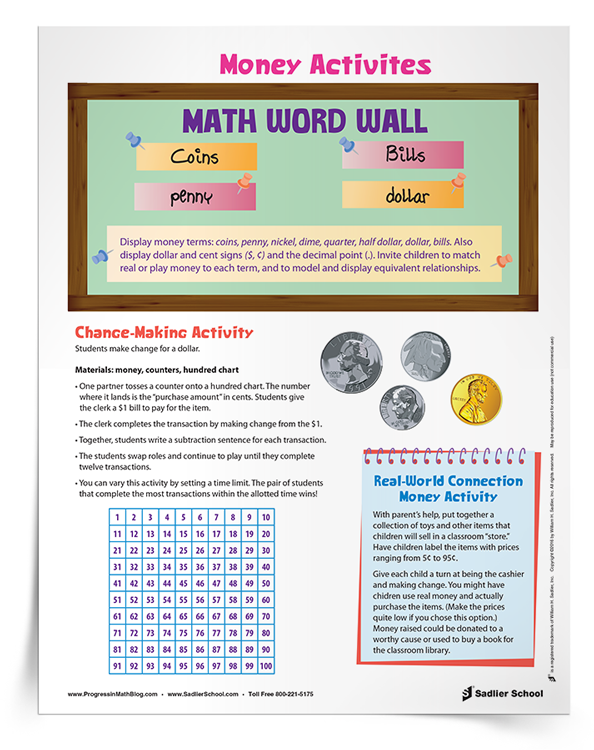1.800.221.5175
Reading & Writing
From Phonics to Reading
Grades K–3
|
Building Reading Success with Wiley Blevins
Grades K–5
Vocabulary
Vocabulary Workshop, Tools for Comprehension
Grades 1–5
Vocabulary Workshop Achieve
Grades 6–12+
|



 In my home state of Massachusetts, the math curriculum framework added standards to Kindergarten and Grade 1 in order to address money. These standards were added because it’s important for students to understand the concept of money before they begin to compute with money amounts in Grade 2. No matter which state you teach in, students should learn early on that coins and bills both represent money amounts. Next, they should be able to identify the value of all U.S. coins and bills and know their comparative value and be able to find equivalent values, make change, and solve problems involving whole-number money amounts. Coin recognition is also important, so don’t forget to talk about heads and tails when you introduce students to coins!
In my home state of Massachusetts, the math curriculum framework added standards to Kindergarten and Grade 1 in order to address money. These standards were added because it’s important for students to understand the concept of money before they begin to compute with money amounts in Grade 2. No matter which state you teach in, students should learn early on that coins and bills both represent money amounts. Next, they should be able to identify the value of all U.S. coins and bills and know their comparative value and be able to find equivalent values, make change, and solve problems involving whole-number money amounts. Coin recognition is also important, so don’t forget to talk about heads and tails when you introduce students to coins!
